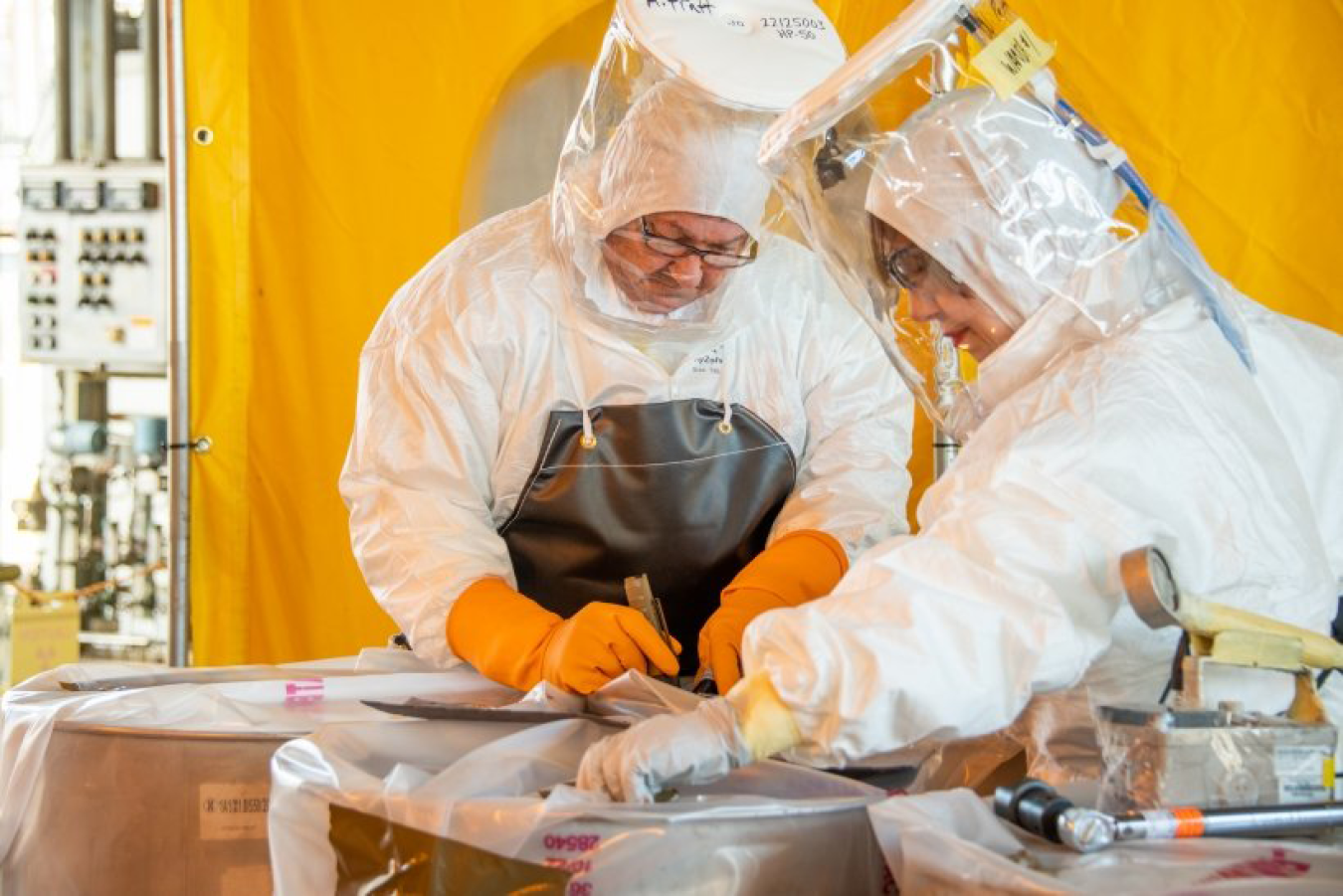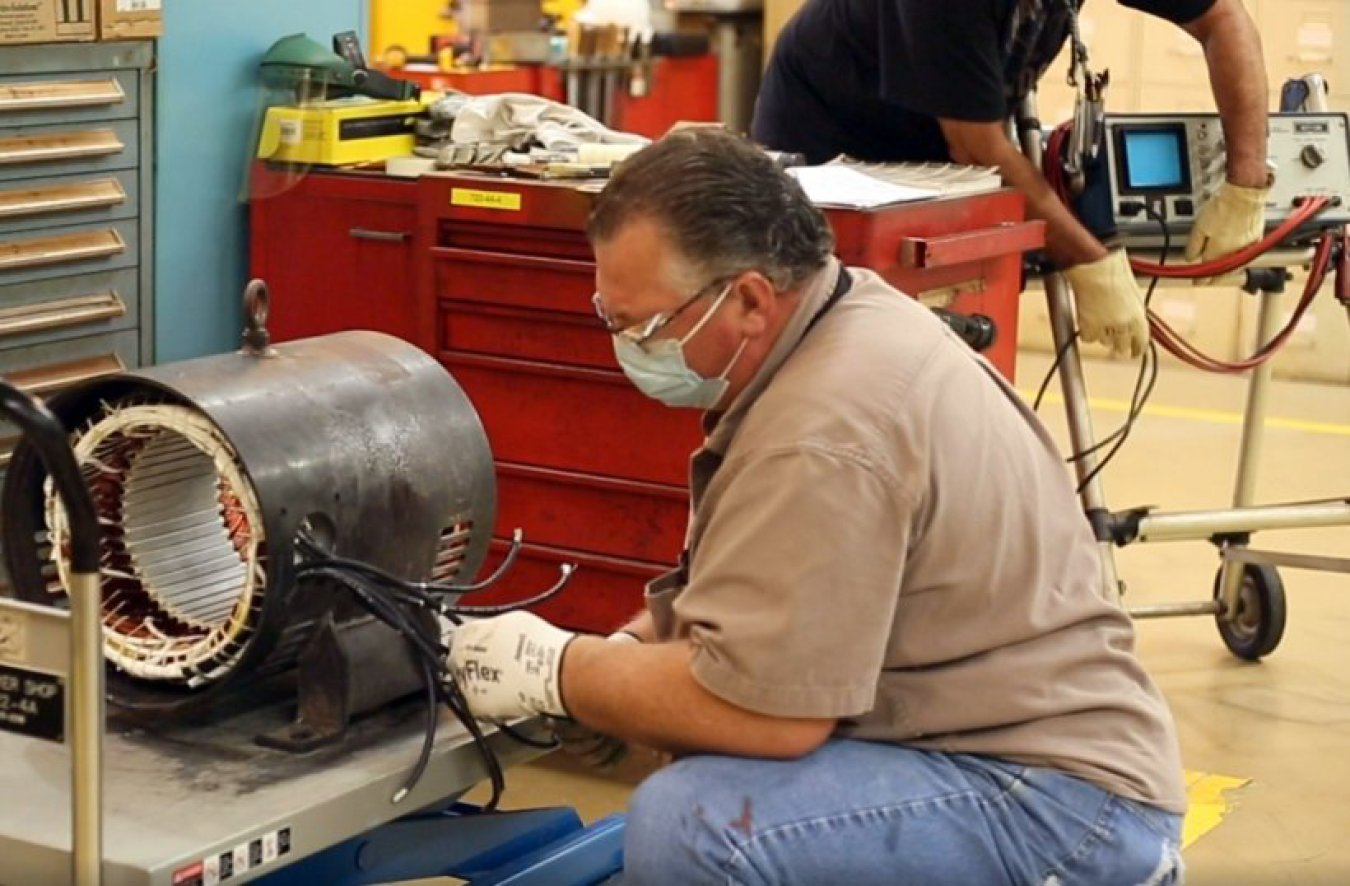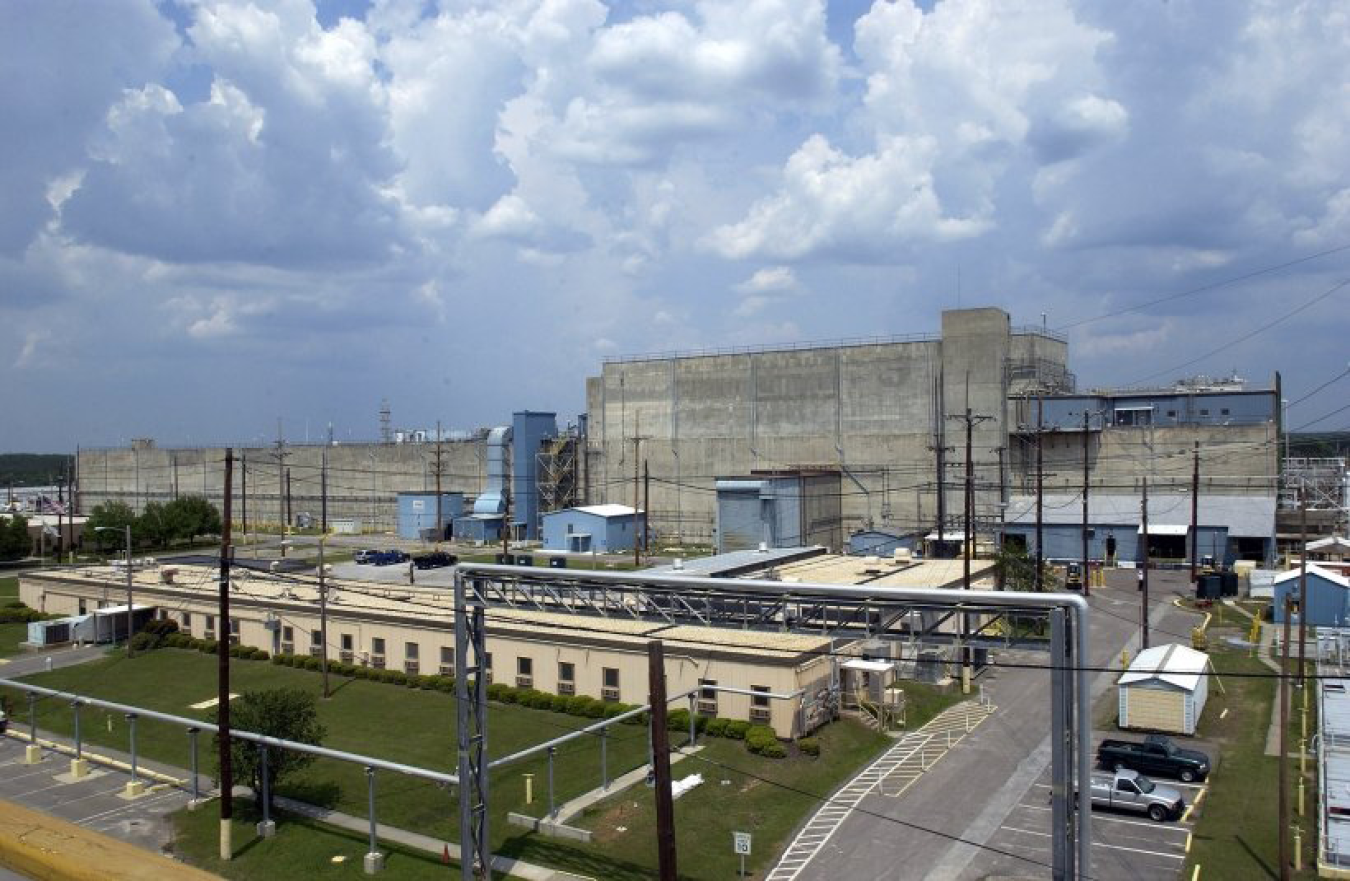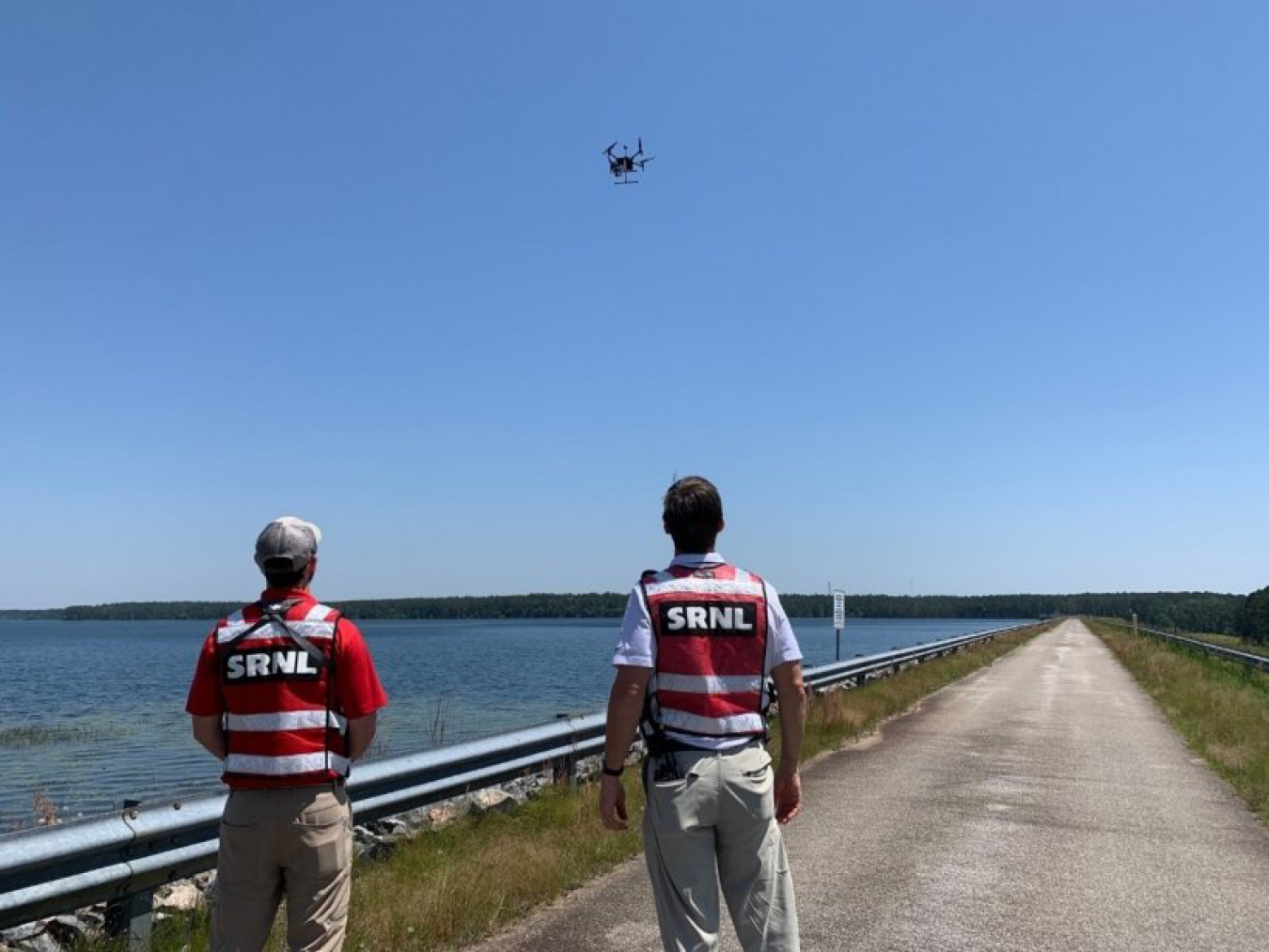Overview
The SRS, a 310 square mile site in Aiken, South Carolina, focused on the production of plutonium and tritium for use in the manufacture of nuclear weapons from its inception in the early 1950s until the end of the Cold War. In 1992, the focus at SRS turned to environmental cleanup, nuclear materials management, and R&D activities.
Today, SRS is run by EM and host to NNSA and the U.S. Forest Service. The DOE Savannah River Operations Office (DOE-SR) works in partnership with multiple contractors in technically sophisticated nuclear and non-nuclear facilities. Cleanup activities at SRS include addressing 34.5 million gallons of radioactive liquid waste stored in 43 underground tanks; surplus plutonium downblending with eventual disposition as TRU waste at WIPP; disposition of highly enriched uranium and receipt/storage/processing of foreign and domestic research reactor spent nuclear fuel; facility deactivation and decommissioning; and soil and groundwater remediation.
To date, 317 of 1,126 facilities have undergone deactivation and decommissioning; 412 of 515 waste units across multiple industrial areas have been remediated; and 40 remediation systems are in operation addressing 14 groundwater contamination areas. Notably, collaboration among SRS stakeholders and state and federal regulators resulted in the in-situ decommissioning of P- and R-Area Reactors in 2011 — the first in the DOE complex. Finally, the operational footprint of SRS has been reduced by 85 percent.
SRS processes and stores nuclear materials in support of national defense and U.S. nuclear nonproliferation efforts. SRS is also responsible for operational oversight of the Savannah River National Laboratory (SRNL), EM’s only national laboratory. SRNL assists EM in achieving the nation’s legacy nuclear waste cleanup objectives and plays an equally important role supporting NNSA through its work in tritium R&D, operations support, stockpile stewardship, nuclear nonproliferation, and other critical national security programs.
SRS leadership is dedicated to meaningful engagement with stakeholders and the citizens of the Central Savannah River Area. DOE-SR and contractor managers meet regularly with federal and state regulators, business and community leaders, and citizen groups to provide updates on SRS operations and to solicit input regarding the missions and budget priorities. SRS enjoys a positive working relationship with stakeholders who support the vision for the coming decade. SRS stakeholders include EPA, South Carolina Department of Health and Environmental Control (SCDHEC), the Savannah River Site Community Reuse Organization, the SRS Citizens Advisory Board, and a host of state and local elected officials.


Calendar Year 2022 Accomplishments
- Removed more than 3.5 million curies from the high-level waste tanks
- Processed approximately 2.2 million gallons of waste at the SWPF
- Completed all concrete placements for SDU 9 - meeting an EM 202 priority
- Initiated the Accelerated Basin De-inventory mission to significantly accelerate spent nuclear fuel disposition
- Transitioned the 235-F Facility to cold and dark status
- Received the DOE Sustainability Award for treatment of legacy contaminant tritium through phytoremediation
Key Regulatory Milestones 2023–2033
Cleanup work at Savannah River is governed by a Federal Facility Agreement among the DOE, SCDHEC, and the EPA. In addition, the Dispute Resolution Agreement with SCDHEC governs salt waste processing quantities for the liquid waste program.
- Start remedial action for Lower Three Runs Stream System — 2023
- Start coal ash remediation in A-Area — 2026
- Start remedial action for ancillary facilities in F-Area — 2027
- Start remedial action for C-Area groundwater — 2028
- Start coal ash remediation in K-Area — 2028
- Start remedial action for D-Area groundwater — 2029
- Start coal ash remediation in L-Area — 2029

Planned Cleanup Scope 2023–2033
Over the coming decade, DOE expects to significantly enhance its ability to tackle the largest remaining environmental risk at SRS — radioactive tank waste — with the ramp up of new waste treatment facilities. DOE will also make continued progress in addressing nuclear materials stored at SRS, and complete disposition of the remaining TRU waste.
The liquid waste program will achieve significant risk reduction through continued stabilization and immobilization of the high-activity fraction of the waste in a glass waste form and immobilization of the low-level fraction of the waste as a saltstone waste form. The SWPF began hot operations in January 2021 and expects to process up to nine million gallons of waste per year following the implementation of the Next-Generation Solvent.
DOE will continue to perform environmental analyses in an effort toward the use of the department’s interpretation of high-level waste for waste streams at SRS. The interpretation was successfully demonstrated in 2020 when a small of amount of DWPF recycle wastewater was shipped to a licensed commercial facility for treatment and disposal. EM has set a priority for 2023 to complete its NEPA analysis for the proposed disposal of contaminated process equipment from SRS.
With the startup and operation of SWPF and its integration with the liquid waste system, substantial progress toward tank closure will continue with up to 22 of the 51 underground tanks set to be closed in the next decade. By 2033, the DWPF is forecast to have produced more than 7,200 canisters of vitrified radioactive waste (more than 85 percent of the anticipated total). The liquid waste program will continue to support receipt of waste from H-Canyon operations.
The near-term nuclear materials disposition program strategic objectives are to continue disposition of legacy material stored in L- and K-Areas, as well as continued surveillance and maintenance of excess, non-operating nuclear facilities awaiting decommissioning. Over the next 10 years, the K-Area facilities will continue to downblend and disposition both EM and NNSA surplus plutonium to produce transuranic waste for disposal at WIPP. In early 2023, Savannah River began shipping downblended plutonium to WIPP. The NNSA capital project for Surplus Plutonium Disposition is underway and will expand the existing downblending capability by installing three new gloveboxes and support systems. The K-Area facilities will continue to provide long-term storage of special nuclear material owned by both EM and NNSA.
The L-Area facilities will continue to provide wet storage of spent nuclear fuel received as part of the domestic and foreign research reactor fuel receipt programs. The Receiving Basin for Off Site Fuels and F/H Analytical Laboratories will complete deactivation activities, enabling transfer to the decommissioning program.
The SRS environmental remediation program employs an approach to address remediation of waste units and facility deactivation and decommissioning per the various site areas. The program will continue to clean up contaminated soils, groundwater, streams and associated wetlands, and legacy waste units, which include ash basins and coal yards. EM is committed to reducing risk and protecting groundwater aquifers and surface waters from the spread of contamination by addressing sources of contamination and employing innovative technologies such as the in-ground reactive barrier wall in P-Area to treat solvent-contaminated groundwater.
In addition, an integral part of the cleanup mission is the deactivation and decommissioning of legacy facilities constructed in support of industrial operations, common infrastructure systems, and past nuclear materials production, such as the 235-F Plutonium Processing Facility, C/K/L Reactors, and F-Area Tank Farm. SRS will continue to operate and maintain soil and groundwater remedial systems, and conduct post-closure and post-ROD care, surveillance, and maintenance of 73 closed areas (approximately 1,000 acres).
EM-NNSA TRANSFER
EM also expects over the next few years to complete transfer of site landlord responsibilities to NNSA. This transfer is being pursued in recognition of the increasing role Savannah River will play in NNSA’s ongoing nuclear security missions. EM will remain focused on completing the remaining legacy cleanup activities at the site. A transition plan is expected to be completed by the summer of 2023 that will define responsibilities and management of functions and capabilities for each organization. DOE currently expects the transfer to begin in 2025.
SAVANNAH RIVER NATIONAL LABORATORY
SRNL starts its second year under an independent Management and Operating contract, to grow and modernize to assure it meets DOE’s mission needs. SRNL’s core missions are to provide innovative and practical solutions to address complex environmental cleanup, long-term stewardship, and nuclear security problems in EM, LM, and NNSA missions.
To support the SRNL mission, EM is building the Advanced Manufacturing Collaborative (AMC) facility on the campus of University of South Carolina, Aiken. Once constructed, the AMC will provide SRNL with an accessible, modern facility for R&D that brings government, industry, and academia together to develop and share advanced manufacturing technology. It will also support STEM education to train the next generation of advanced manufacturing workers to support both DOE missions and U.S. industry that will increase manufacturing competitiveness across the state, region and nation. Construction of the AMC facility is expected to be completed in 2024.
Following the completion of the transfer of overall site responsibility from EM to NNSA, EM will retain management of SRNL.

Post-2033 Cleanup Scope
The liquid waste program will start shutting down its operations after DWPF completes treatment operations for the remaining sludge and salt waste and operational closure of the tank farms is completed. Once the liquid waste program cleanup mission is completed, the surveillance and maintenance of the vitrification canisters in storage will be transferred to the solid waste program before eventual disposition at a federal repository yet to be determined. The remaining non-operational nuclear material facilities (e.g., F-Canyon/FB-Line, H-Canyon/HB- Line) will complete deactivation and be turned over for decommissioning. Operations in K-Area will continue to support the disposition of surplus plutonium with a significant downblending mission, with the facility deactivated after the special nuclear material is dispositioned.
Newly generated wastes resulting from the EM cleanup program will continue to be disposed of in accordance with the EM mission as the waste is generated. As the nuclear materials and liquid waste programs complete their missions, the environmental remediation and deactivation and decommissioning programs will ramp up to provide for remediation of approximately 100 legacy waste units and deactivation and decommissioning of over 800 industrial, nuclear, and radioactive facilities. DOE currently expects to complete legacy cleanup activities at Savannah River by 2065.

